|
Excavations at Laona 2013 The 2013 excavation season was initiated with a small team excavating at Laona, on the southeastern side of the artificial mound, Four trenches were investigated during this season LA2-LA10, LA10, LA13, LA14. Trenches LA13 and LA14 revealed the same overlapping layers of marl and red soil that characterize the construction of the Laona mound. No architectural remains or other features were discovered within these two trenches. A significant amount of pottery sherds was unearthed, including the handle fragment of a Late Minoan stirrup jar in 'oatmeal' fabric, bearing an inscribed Cypro-Minoan mark on the handle. Our investigations in trenches LA2-LA10 and LA10 exposed part of the large retaining wall, delineating the mound of Laona to the southeast. The wall runs on a north/northwest south/southeast axis. During the 2013 expedition we uncovered a series of mudbricks abutting the west side of the wall, laid on the same orientation. The mudbricks were made of buff-coloured clay, with small pebbles and organic materials (straw). West of the mudbrick feature, we excavated the consecutive layers of marl and red soil, which are characteristic for the construction of the mound. |
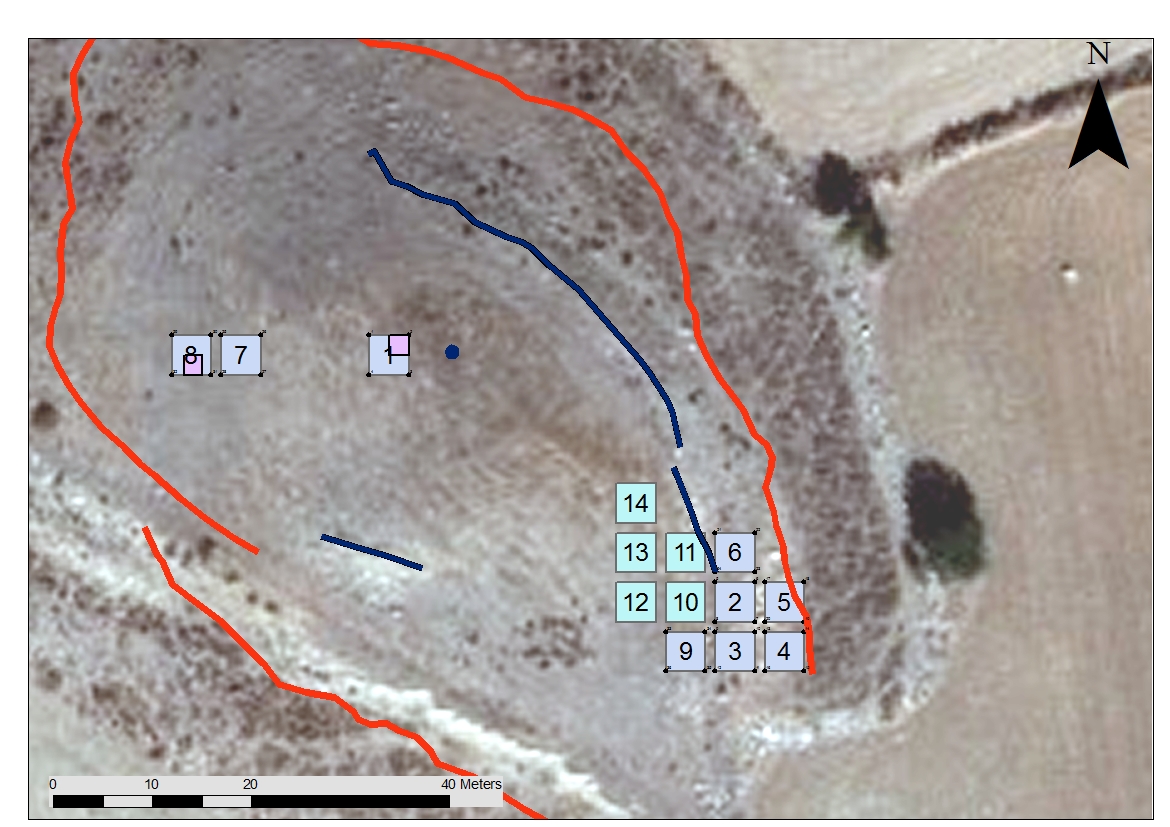 |
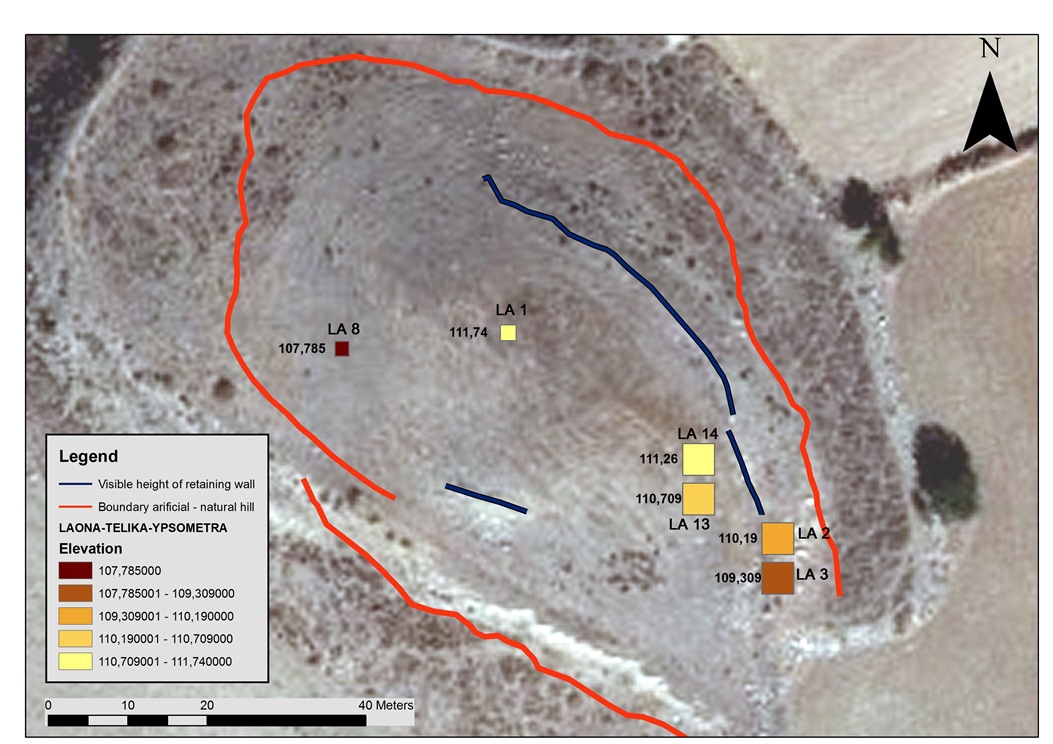 |
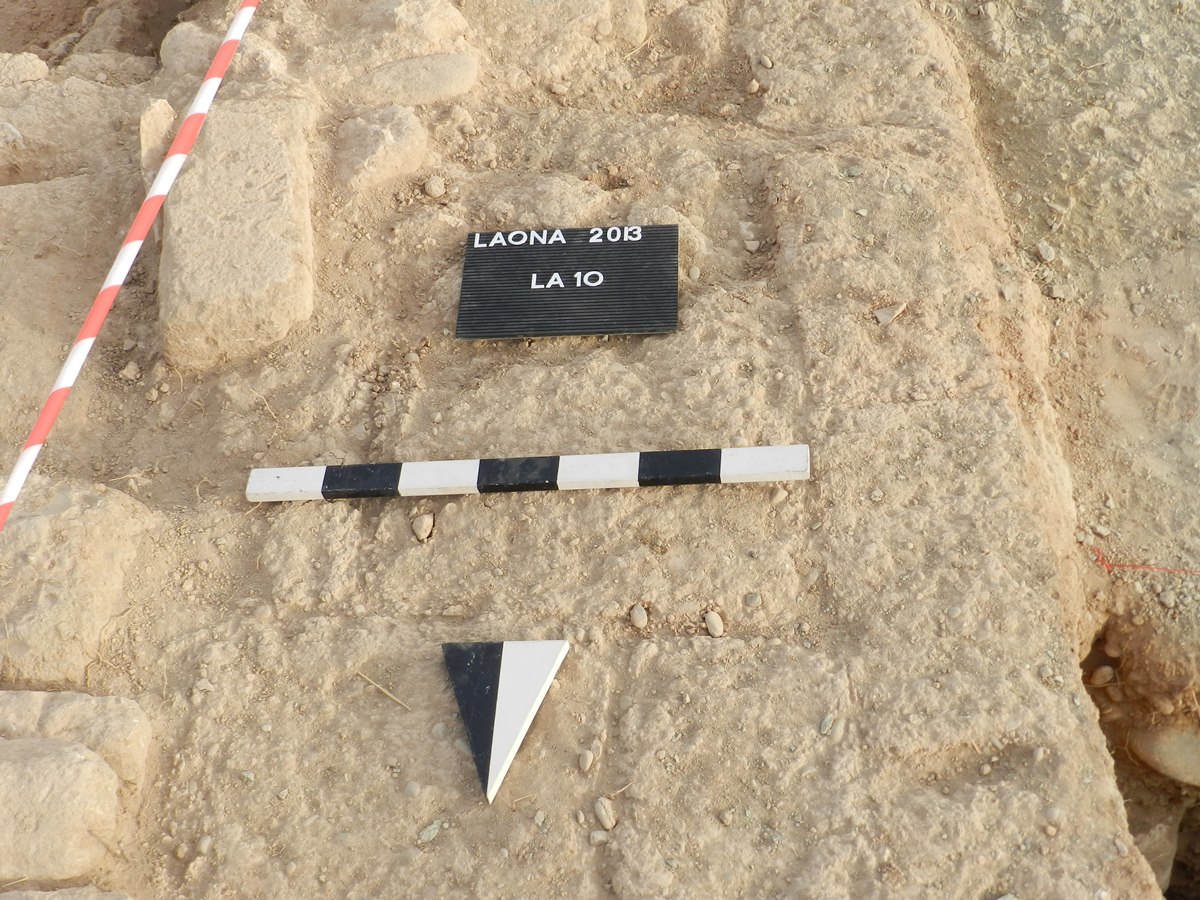 |
| During the final week of the excavations, and following the permission granted by the Department of Antiquities, we decided to investigate the Laona hill with mechanical means, aiming to efficiently determine the mound's role and function. We initiated the mechanical excavation of the tumulus with trenches LA15 and LA16. Excavating to a depth of approximately 6m., we reached the natural bedrock at 106.790m. above sea level, without tracing any architectural remains. The soil consisted through and through of overlapping layers of marl and red soil, and contained limited numbers of pottery fragments. The same results were produced with the excavation of trenches LA 18 and LA20 situated to the northwest of LA15 and LA16. Again, the natural bedrock was reached without revealing any architectural features. The third attempt was undertaken at trenches LA 17 and LA22, to the northwest of LA18 and LA20. Excavations in the area exposed the corner of a structure, uncovered at a depth of ca. 4.5m. from the top of the mound. There were also two large cavities uncovered on the western side of trench LA22. It remains unclear how these two holes were forms and how they survived beneath the tons of soil comprising the Laona mound. |
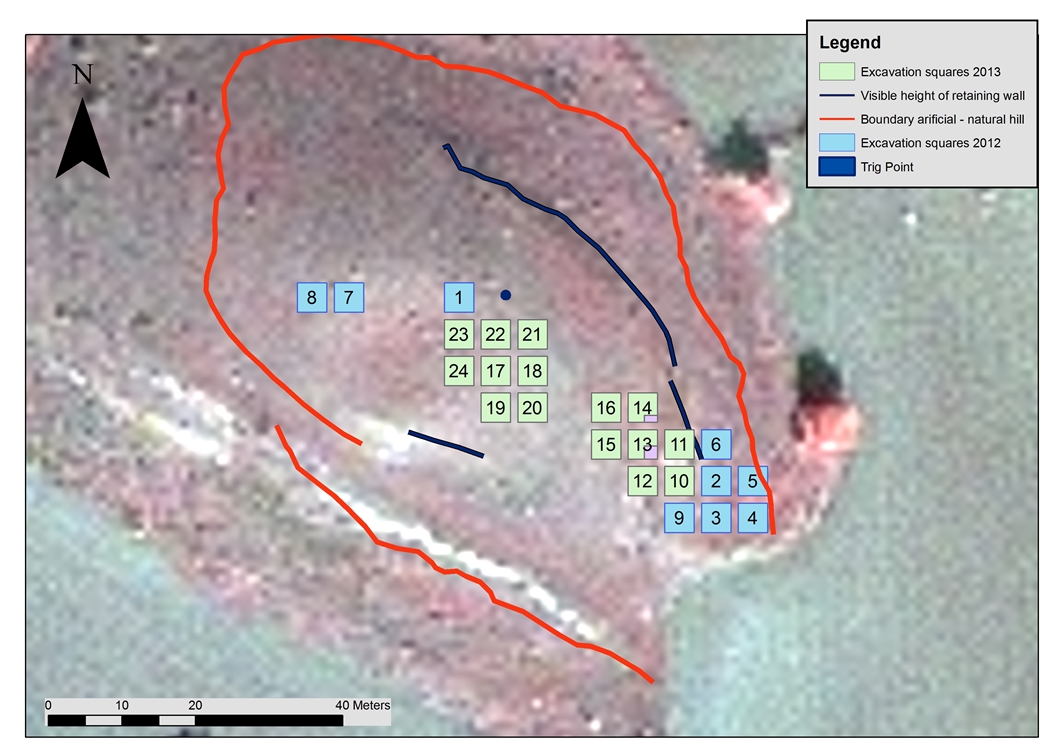 |
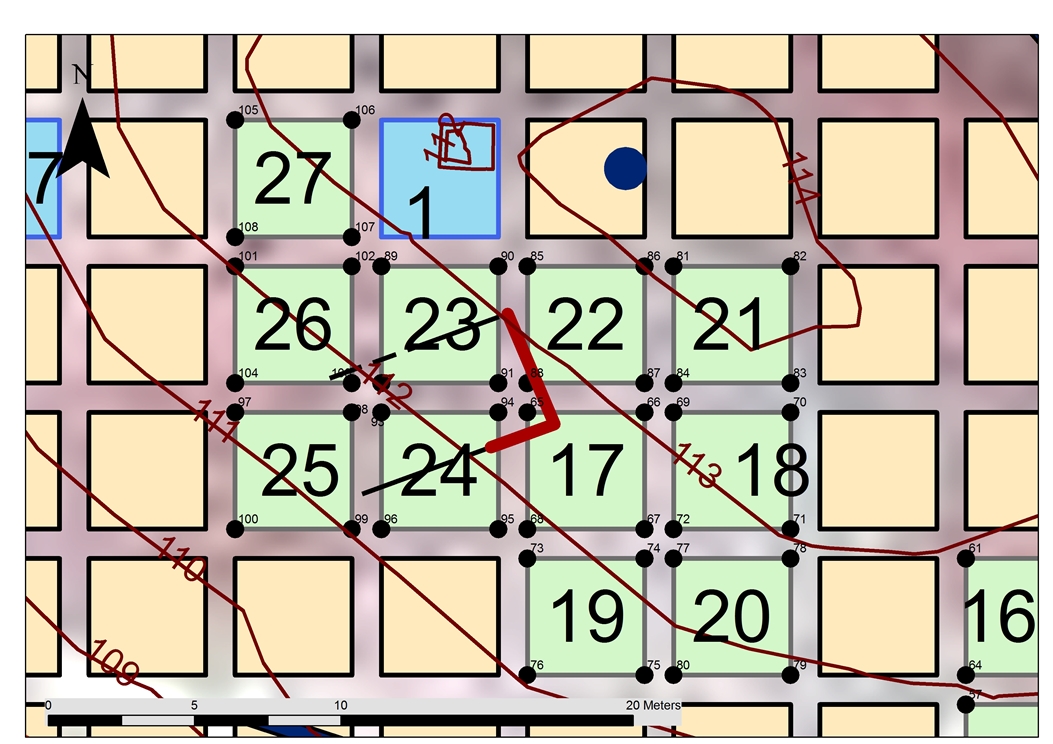 |
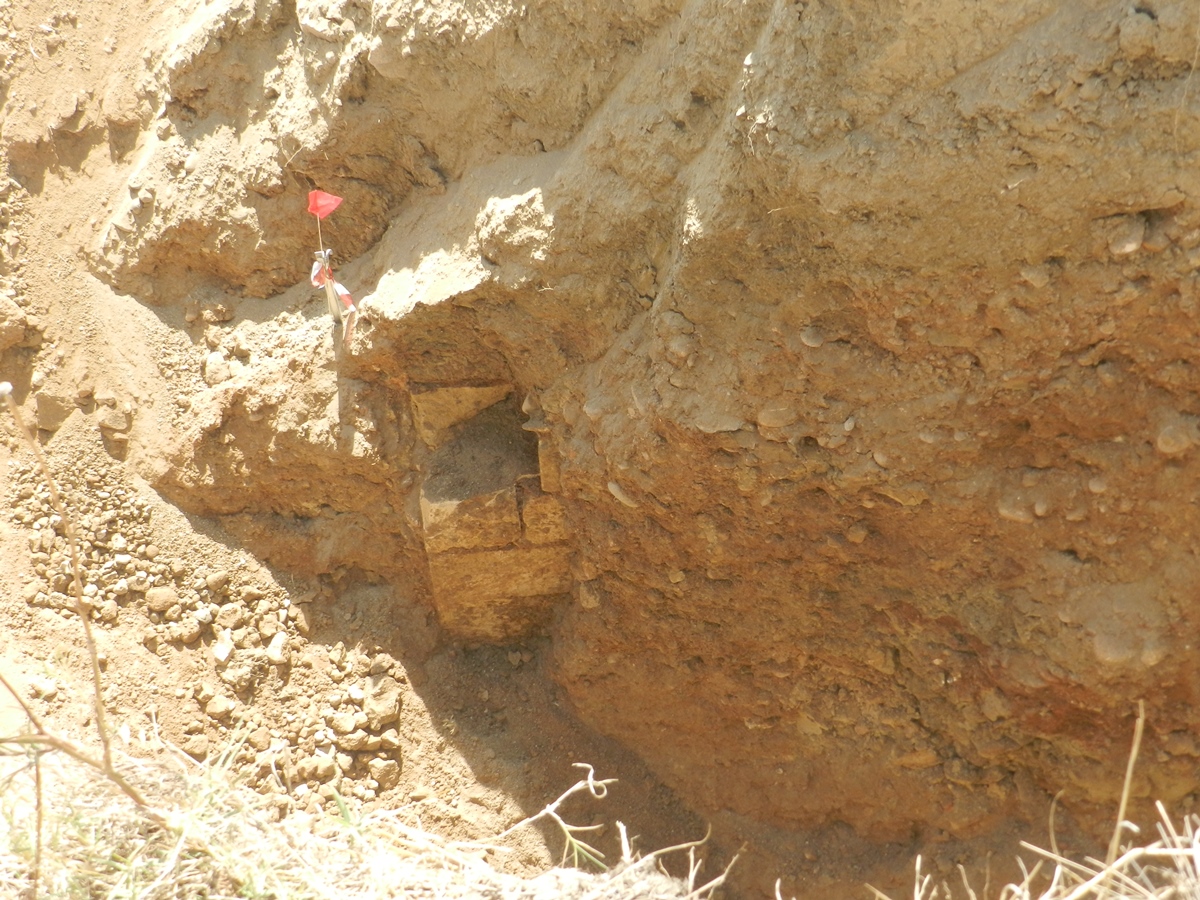 |
|
|
|
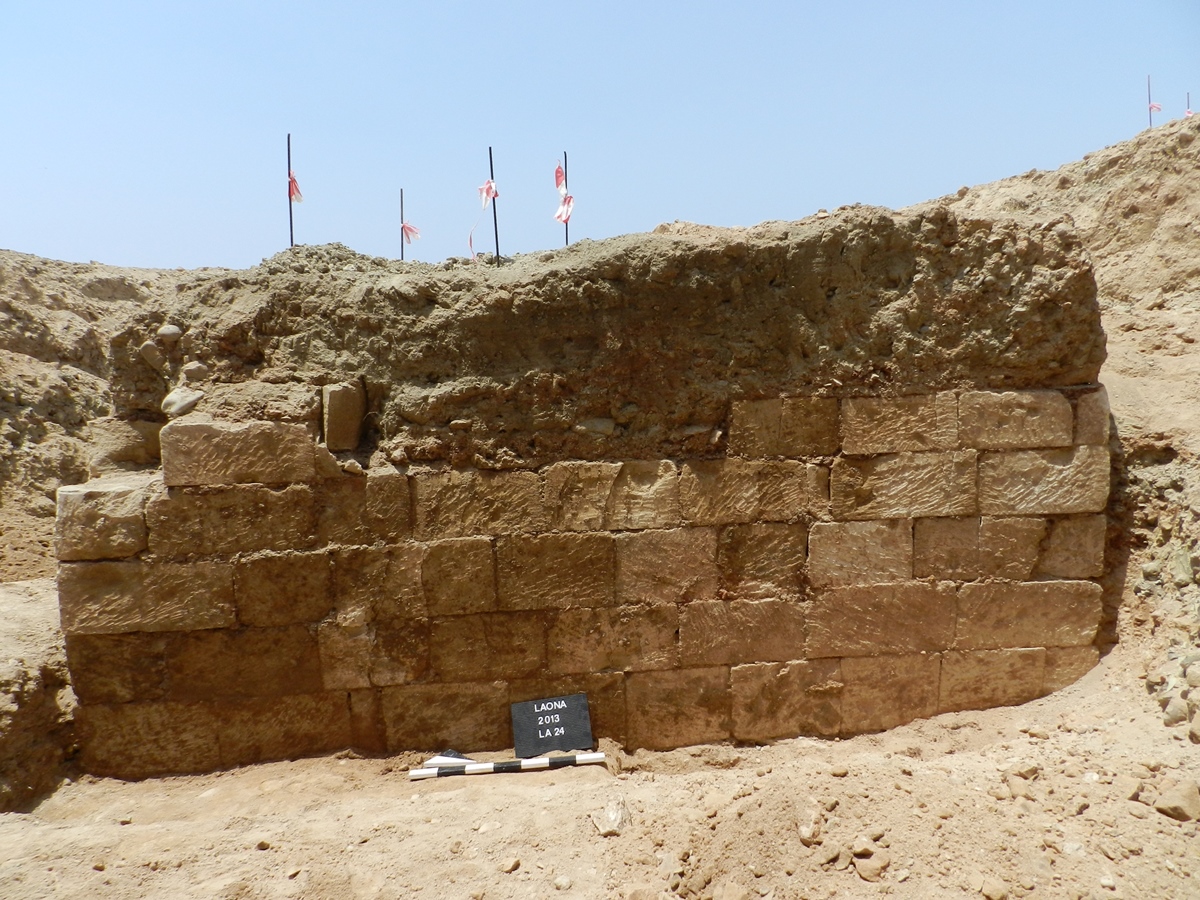 |
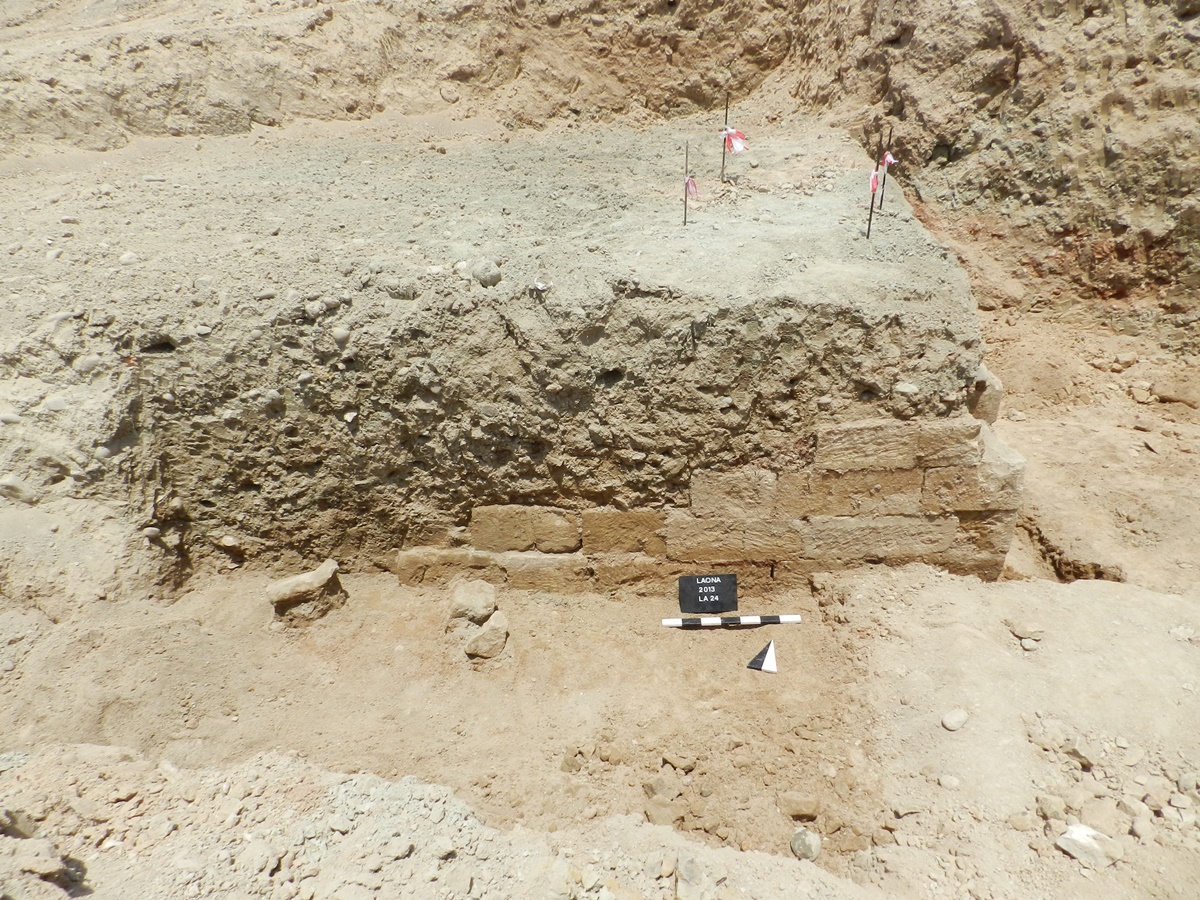 |
| The structure exposed following the mechanical excavation of approximately 4.5m. of layers of marl and red soil appears to be a rectangular building, made of ashlar blocks. It is oriented on a NW-SE axis. We revealed part of its southern, eastern and a very small part of its northern side. The structure's eastern façade measures 4.05m. and is made of well drafted ashlar blocks. So far there were five courses of stone revealed. The southern wall extends for 3.55m.,but it appears that it continues into the unexcavated area. The southern façade descends towards the west on a "ladder" fashion. It is not clear whether this was intentional, or this effect was caused by the removal of stones on the western part of this structure. The monument's date, purpose and relation to the Laona mound remain unclear and will be address in a forthcoming season. Specific measures to protect the monument were undertaken by conservator Lefteris Charalambous from the Department of Antiquities. |
| Excavations at Hadjiabdullah 2013
Following the work of 2009 and 2010, in 2013 we focused on Area 2 as well as farther to the east of Area 2, directly north of the palace compound. In the area directly north of the palace (north of plot 140) we excavated two new trenches (HA 39 and HA 40). The excavation revealed walls running north to south as well as part of a Moving farther to the west we opened two more new trenches (HA 35 and HA 36). The excavation revealed the continuation of the west channel of the palace compound. The channel seems to be built in the same way as the east channel with walls, about 1.5 meters wide, running north to south. In addition we exposed part of walls, with an east to west direction, at the northern and southern baulks of the trenches. It is important to note that the walls uncovered seem to be the same orientation as the walls of the palace compound, suggesting a common building plan. |
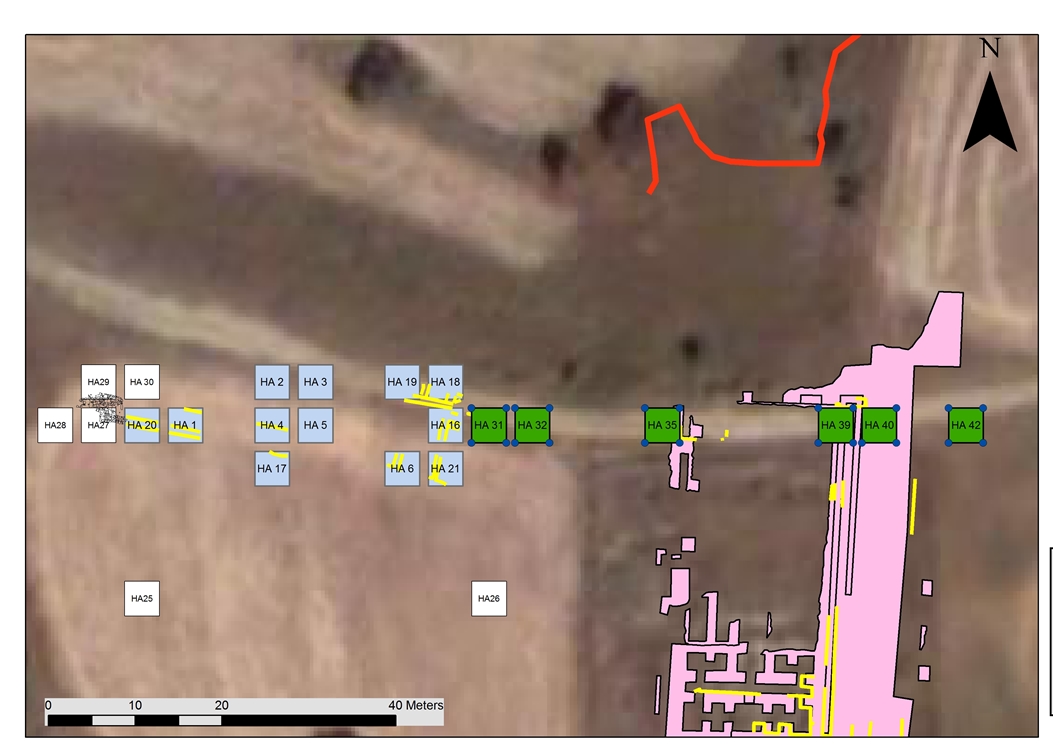 |
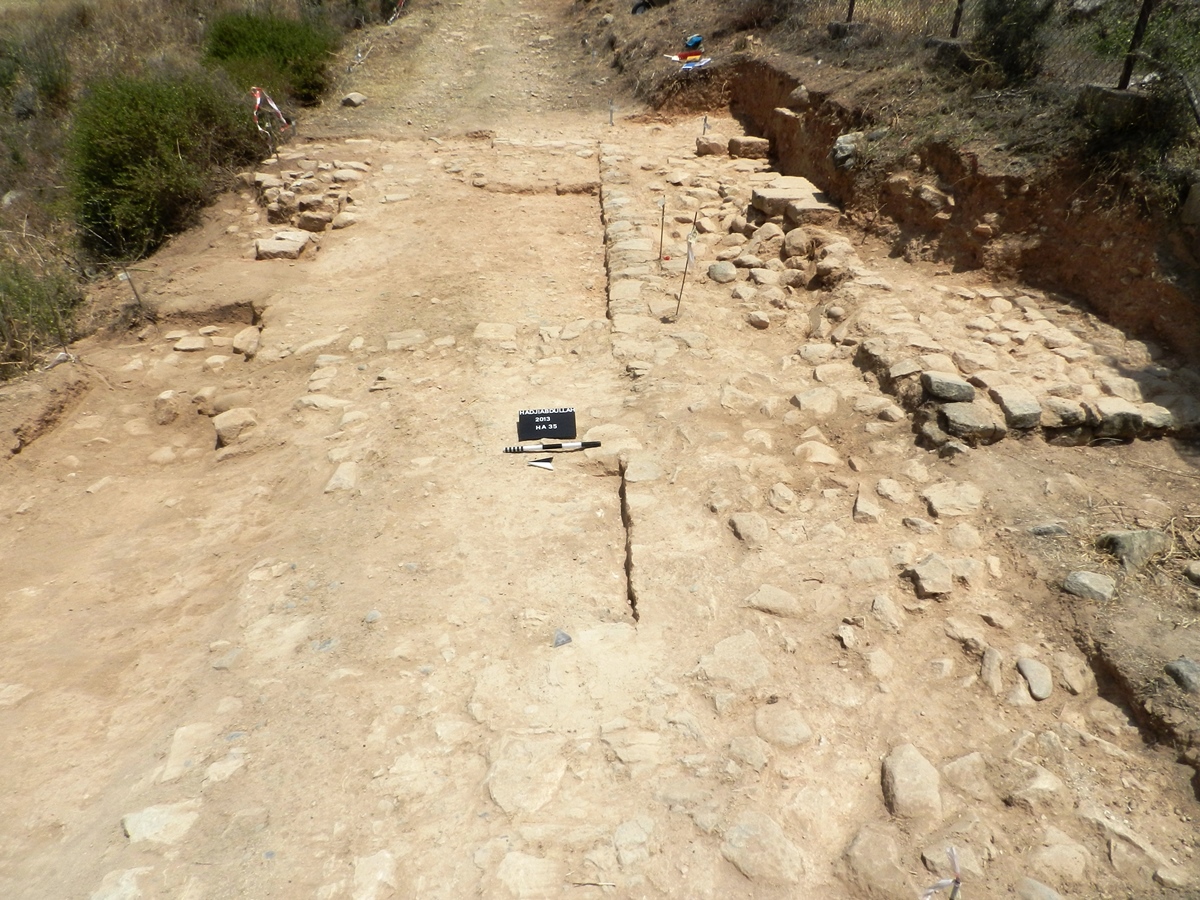 |
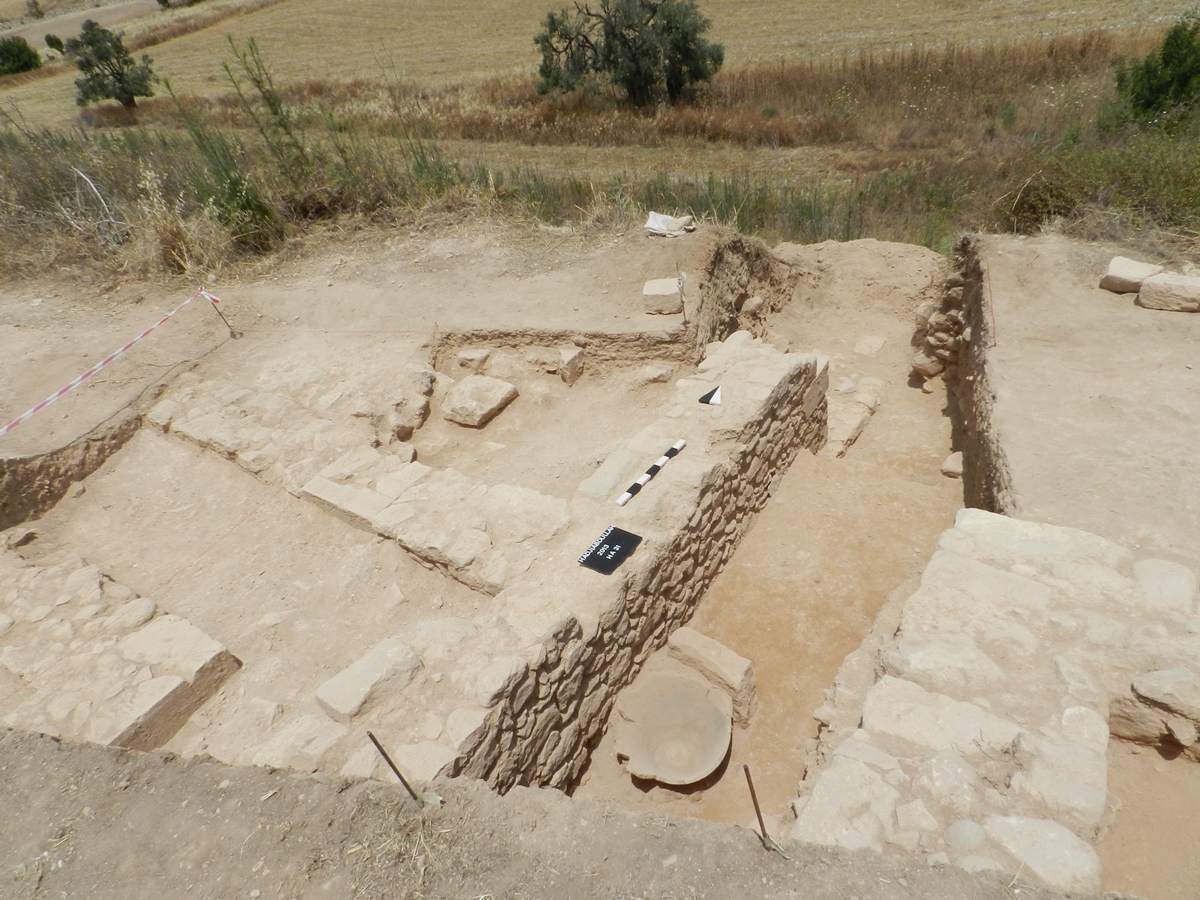 |
| Finally in 2013 we opened trenches HA 31 and HA 32 with the purpose of revealing more of the complicated structure that seems to be at a different orientation than the palace compound and the structures uncovered to its north. The excavation revealed more walls of different phases and masonry suggesting different dates for their construction. A long cross wall was uncovered at the southeastern part of HA 31, extending northeast, in the baulk of HA 31-HA32, and continuing farther north. This wall was uncovered to its preserved northern limit, which reached the edge of the cliff. A second lateral wall was found in HA 31, approximately in the middle of the trench, as well as a corner, which may be related to the walls excavated in HA 16. In the northern half of HA 32 we uncovered 2 more walls connecting at a corner with a small, north to south, cross wall.
In addition to the excavation of the various walls, this year we uncovered the remnants of what may be a small-scale industrial installation. To the east of the long cross wall excavated in HA 31-HA 32, we uncovered the bottom part of a pithos, leaning against a slab, with flat tile at its bottom. Nearby we also found large flat tiles, preliminarily dated to the Late Classical period. |
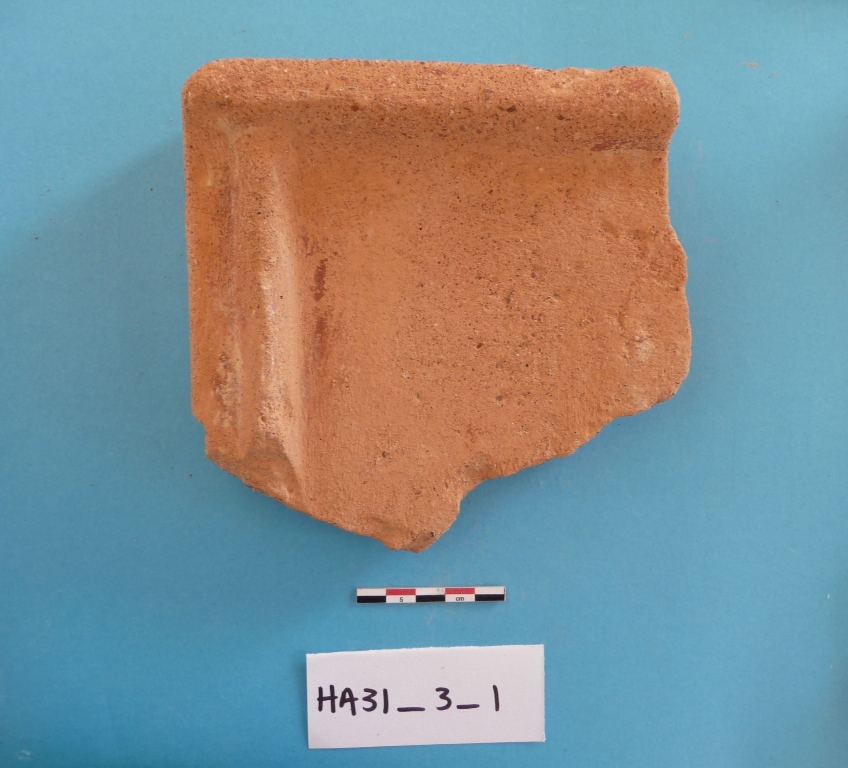 |
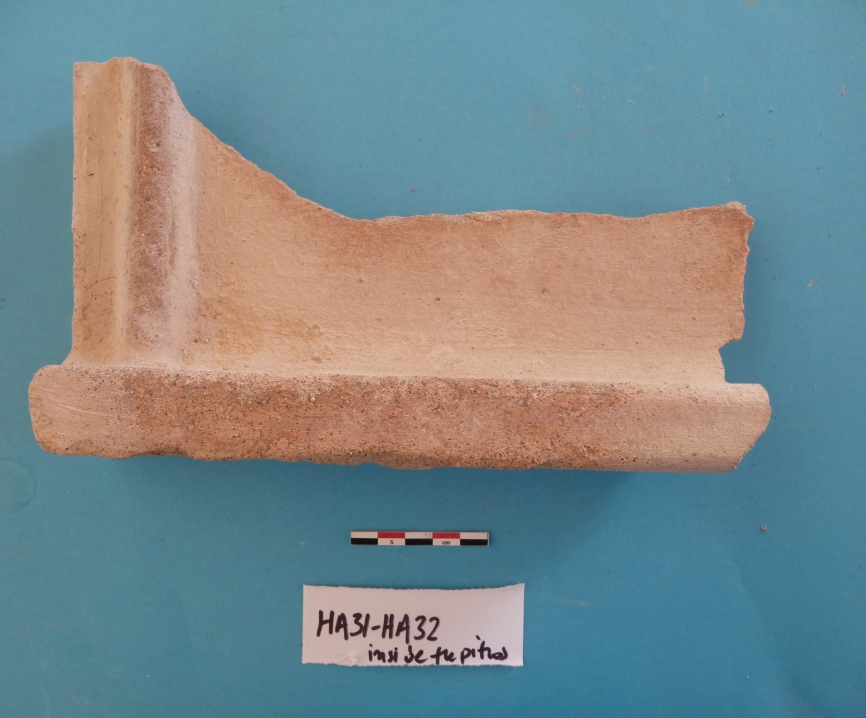 |
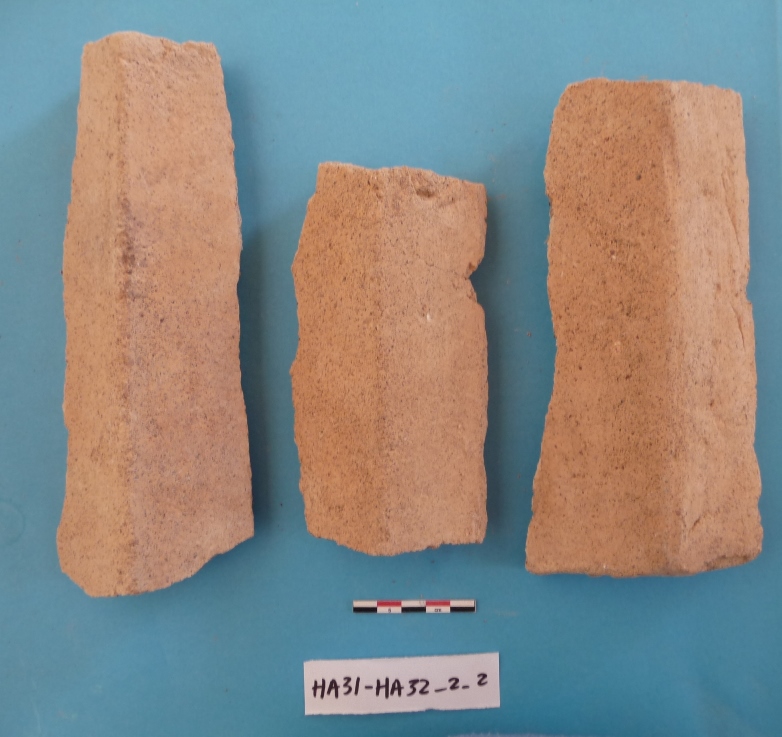 |
| Excavations 2013-B (Laona)
A small-scale and short term excavation season was initiated at Laona on the 17th of October and was completed on the 2nd of November 2013 (Phase 2013-B). The focus of the small-scale excavation season was the investigation of the "monument" uncovered at Laona at a depth of ca. 4.5m. from the top of the mound. The monument was aligned facing the Sanctuary. Following a two-week excavation, we were able to confirm that the structure was filled by a uniform layer, consisting of a clayey soil and marl. The pottery uncovered inside the monument was very limited. |
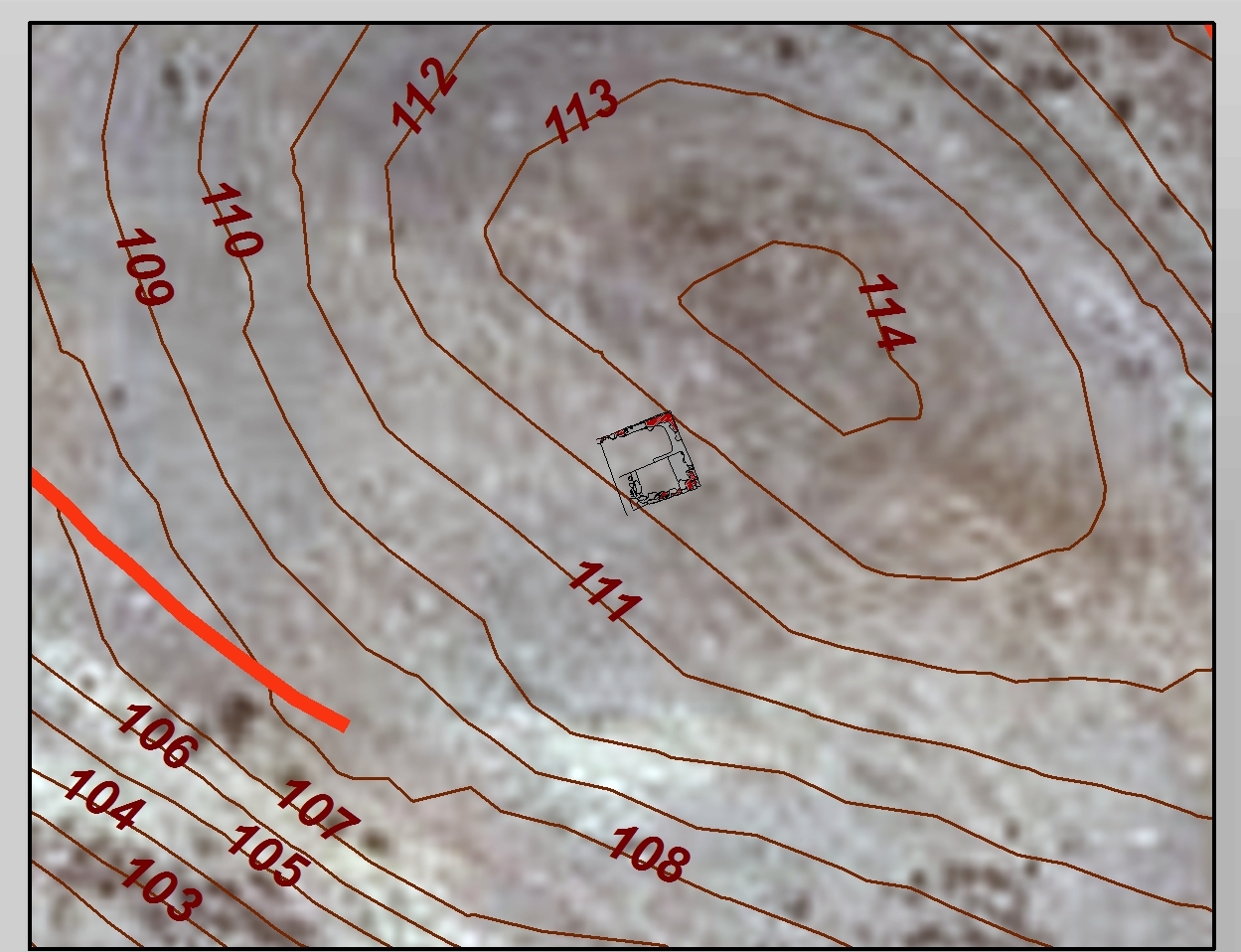 |
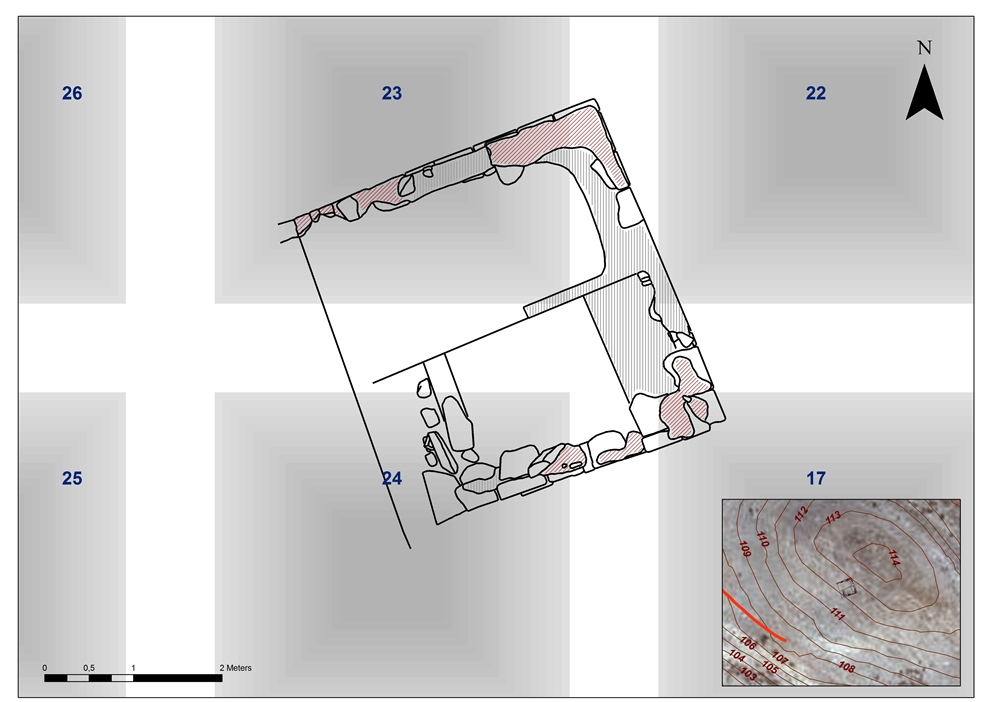 |
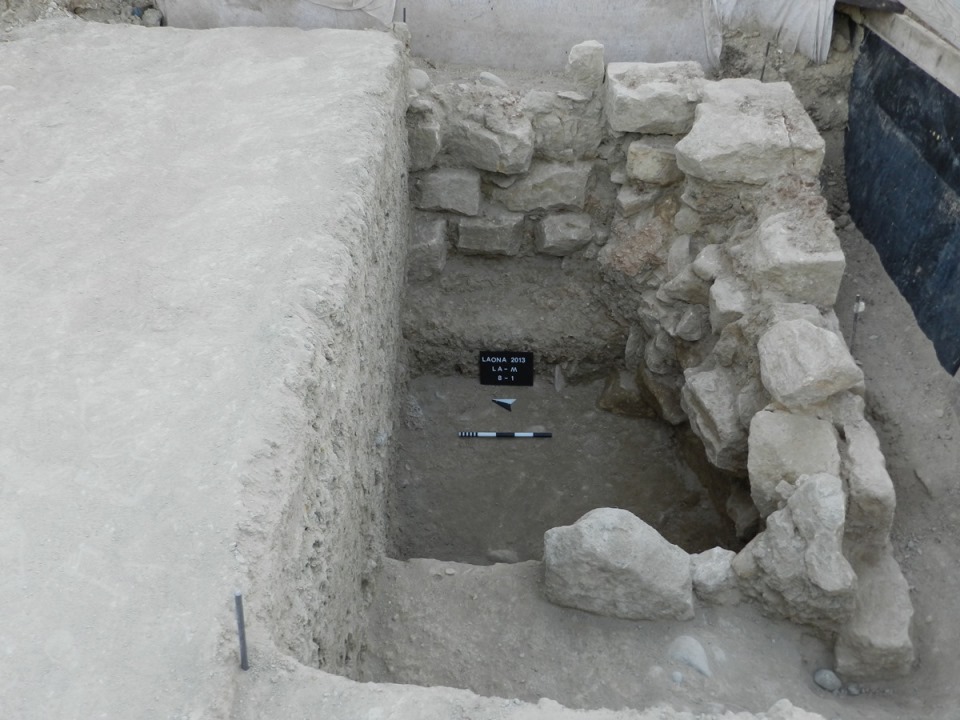 |
| The outside face of the walls on the three sides exposed was constructed by good quality ashlar blocks. Reddish clay was used in between the ashlar blocks. On the contrary, the construction of the wall on the inside consisted of unworked stones of various sizes, held in place by copious amounts of reddish clay. The inside of the wall did not match the ordered masonry of the monument's façade. The monument's minimum height is estimated at around 2.5m. Our excavation on the inside of the "monument" reached 2.3meters in depth, without reaching the foundation of the walls. However, for safety purposes, it was decided to stop the excavation at this point.
Both the northern and the southern walls of the wall had some of their stones removed, judging by the fact that the top surface on some of the stones is covered by the reddish clay, which indicates that originally stood another stone, now missing. It became evident that the northern wall continued towards the unexcavated area to the west. The small size of the monument and its location off-centre in relation to the axis of the tumulus, suggest that what we have identified as a "platform" is not the only monument lying underneath the mound. |
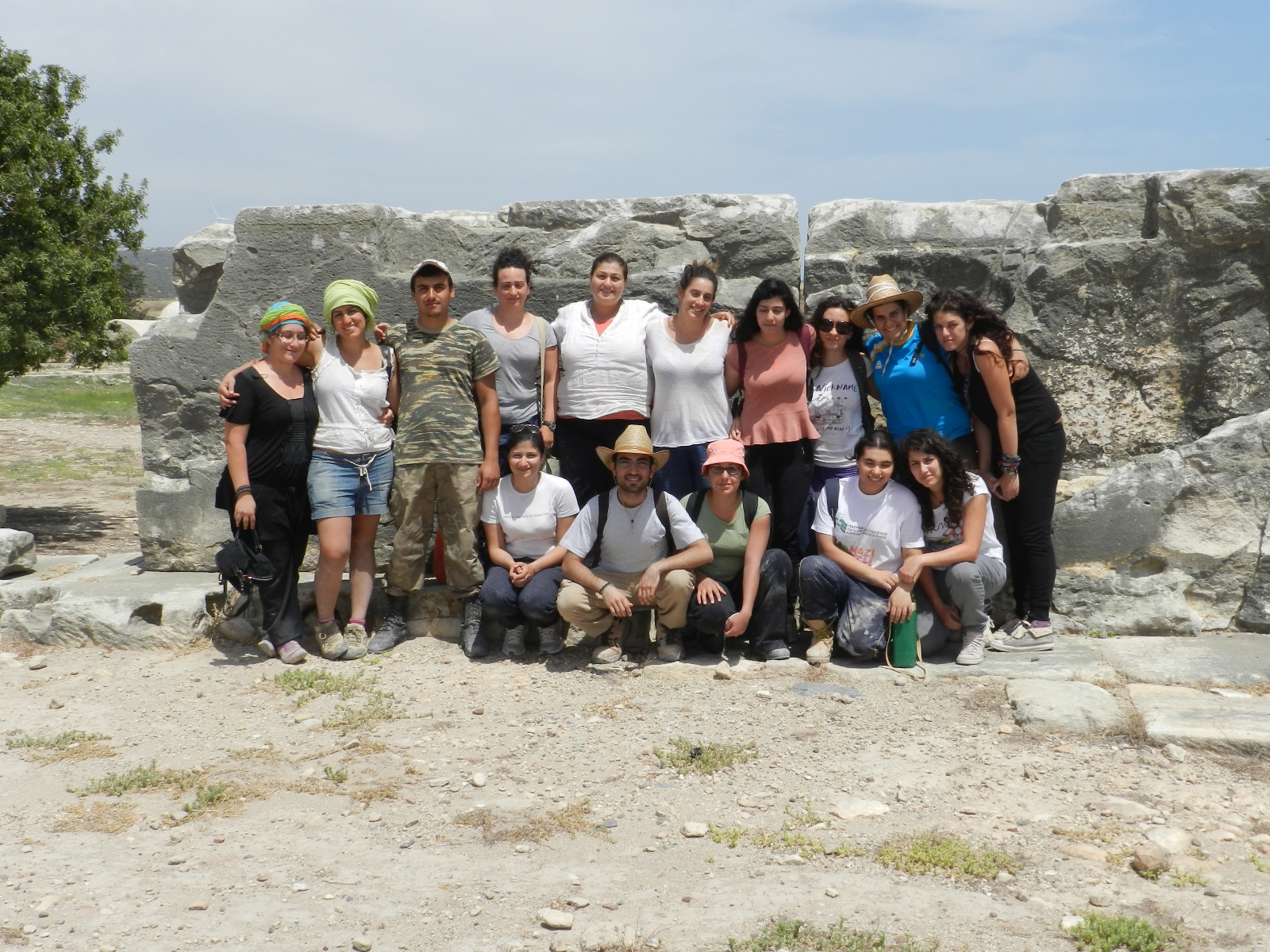 |
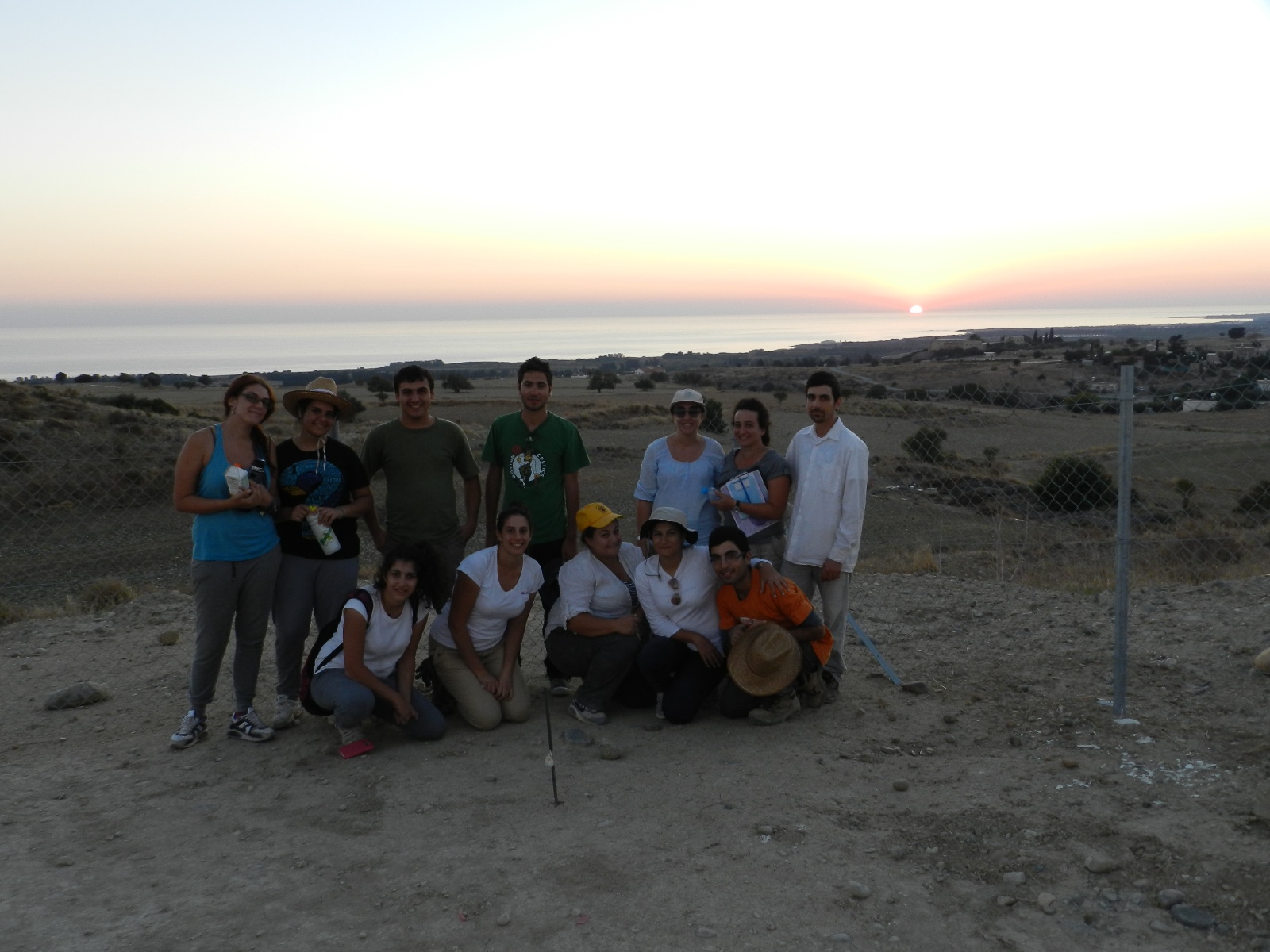 |
|
Team A
|
Team B | |||
| Maria Iacovou
Artemis Georgiou Stella Diakou
Athos Agapiou
Eleftheria Eleftheriou
Frixos Markou
Evaggelia Christodoulidou
Panagiota Nicolaou
Maria Hadjigavriel
Eleni Karekla
Christiana Christodoulou
Fotini Constantinou
Kiriaki Panagiotou
Androulla Fouskotou
Irene Frangou
Katerina Giannakou
Elisavet Ilieva
Zinonas Sokratous
Daniella Georgiou
Raphael Charalambous
|
Director, Professor in Prehistoric and Protohistoric Archaeology, Univ. of Cyprus Assistant Director, Pottery specialist
Assistant Field Director
Topographer, PhD Candidate, Univ. of Cyprus
Master Student, Univ. of Cyprus
Master Student, Univ. of Cyprus
Master Student, Univ. of Cyprus
Master Student, Univ. of Cyprus
Undergraduate Student, Univ. of Cyprus
Undergraduate Student, Univ. of Cyprus
Undergraduate Student, Univ. of Cyprus
Undergraduate Student, Univ. of Cyprus
Undergraduate Student, Univ. of Cyprus
Undergraduate Student, Univ. of Cyprus
Undergraduate Student, Univ. of Cyprus
Undergraduate Student, Univ. of Cyprus
Undergraduate Student, Univ. of Cyprus
Undergraduate Student, Univ. of Cyprus
Undergraduate Student, Univ. of Cyprus
Undergraduate Student, Univ. of Cyprus
|
Maria Iacovou
Artemis Georgiou Stella Diakou
Athos Agapiou
Eleftheria Eleftheriou
Frixos Markou
Evaggelia Christodoulidou
Eleni Athanasiou
Skevi Christodoulou
Maria Hadjigavriel
Christiana Christodoulou
Fotini Constantinou
Elisavet Ilieva
Zinonas Sokratous
Daniella Georgiou
Raphael Charalambous
Sergios Menelaou
Thea Christoforou
Grigoria Ioannou
Sergio Turisi
|
Director, Professor in Prehistoric and Protohistoric Archaeology, Univ. of Cyprus Assistant Director, Pottery specialist
Assistant Field Director
Topographer, Technological Univ. of Cyprus
Master Student, Univ. of Cyprus
Master Student, Univ. of Cyprus
Master Student, Univ. of Cyprus
Master Student, Univ. of Cyprus
Doctoral Student, Univ. of Cyprus
Undergraduate Student, Univ. of Cyprus
Undergraduate Student, Univ. of Cyprus
Undergraduate Student, Univ. of Cyprus
Undergraduate Student, Univ. of Cyprus
Undergraduate Student, Univ. of Cyprus
Undergraduate Student, Univ. of Cyprus
Undergraduate Student, Univ. of Cyprus
Master Student, Univ. of Sheffield
Master Student, Univ. of Southampton
Master Student, Univ. of Sheffield
Undergraduate Student, Univ. La Sapienza, Rome
|
|
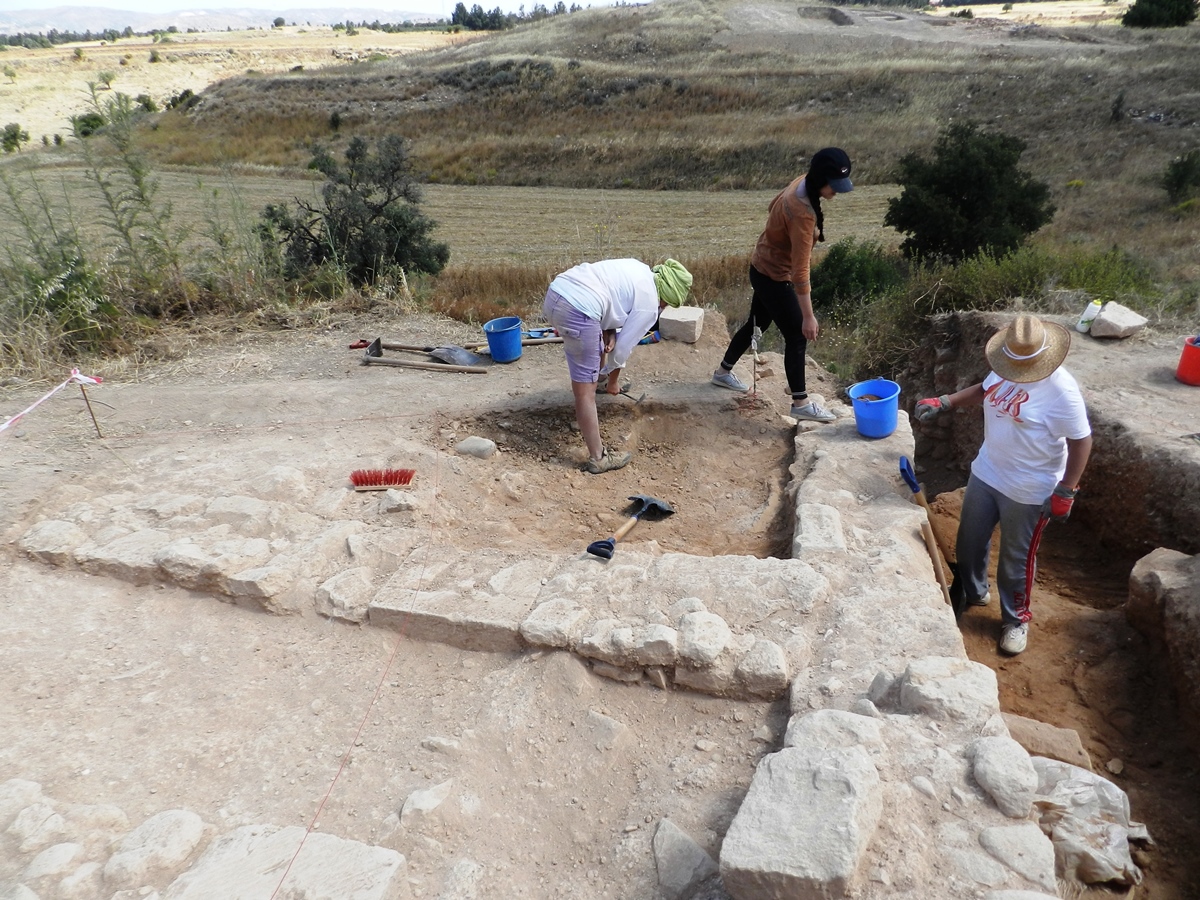 |
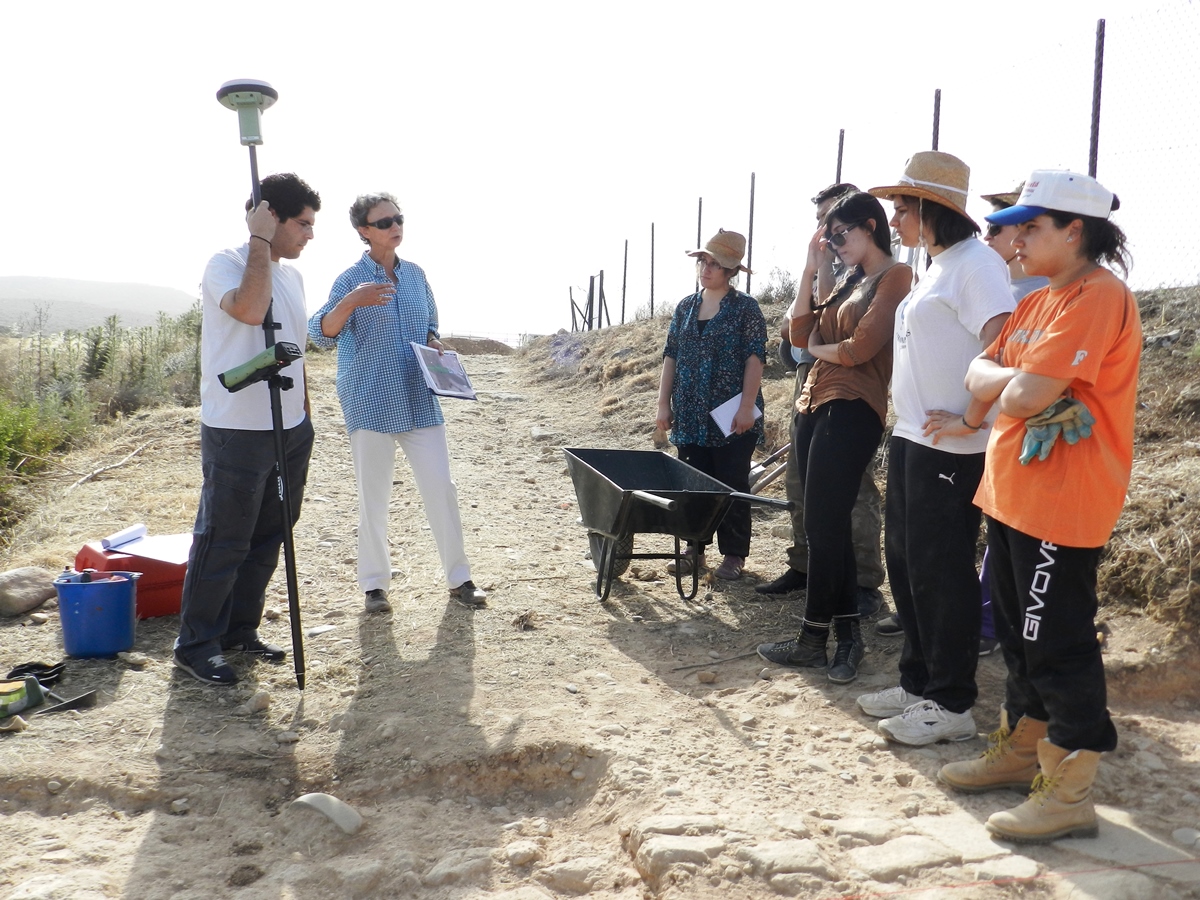 |
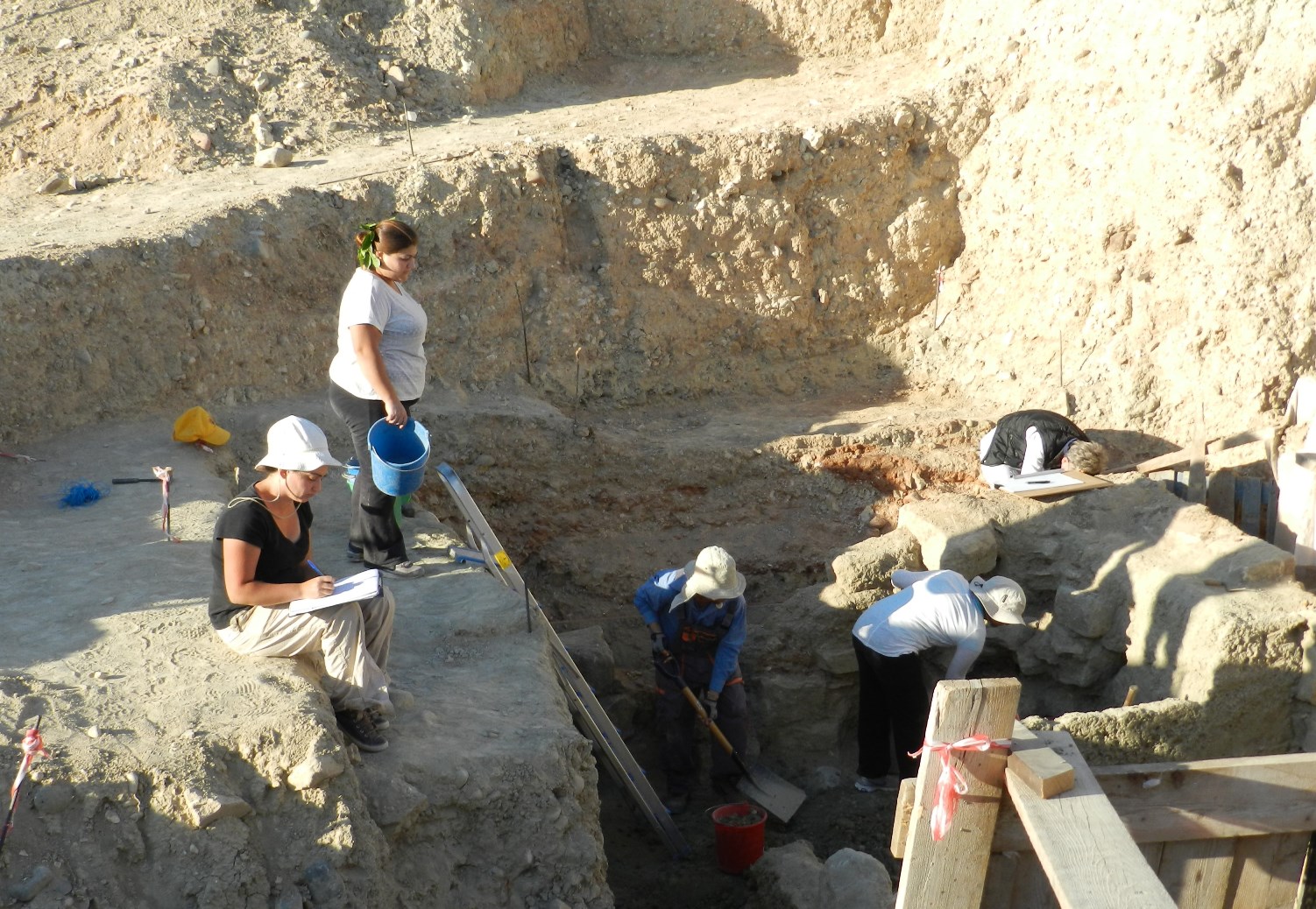 |
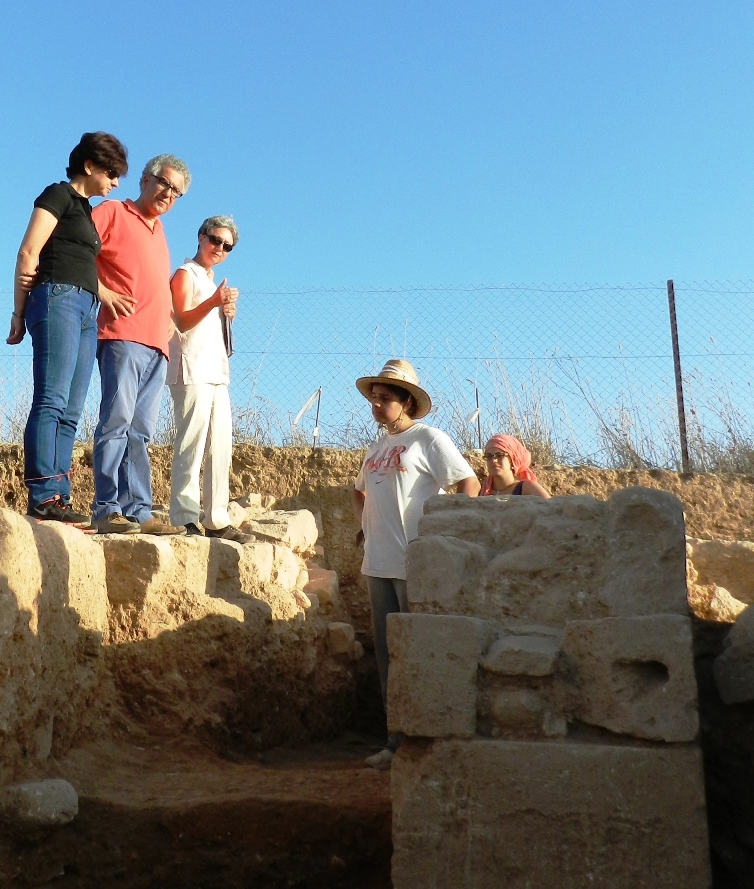 |

